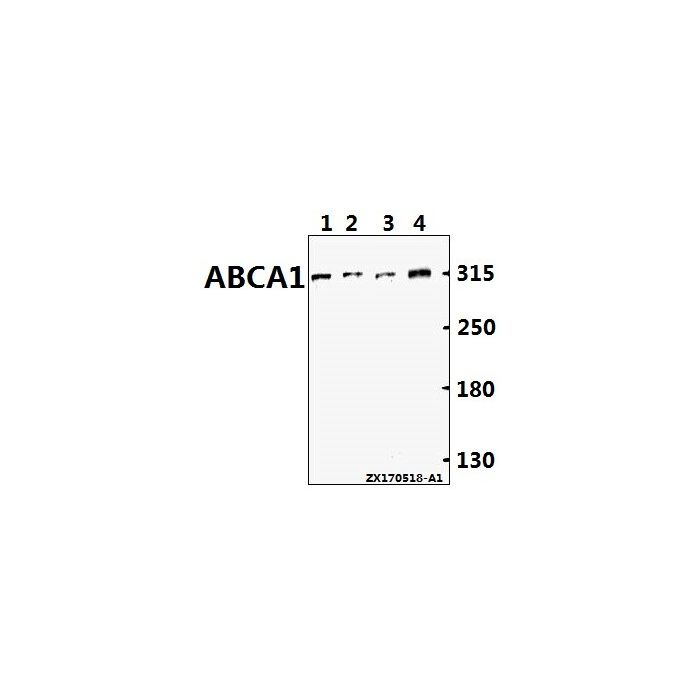ABCA1 polyclonal, anti-human, mouse, rat
€305.00
In stock
SKU
BS60011
Background:
ABC1 (for ATP-binding cassette transporter 1) is a member of the family of ATP-binding cassette proteins which transport various molecules across biological membranes. ABC1 contains two characteristic ATP-binding domains and 12 transmembrane domains which form a channel-like structure for transport. Mutations in the ABC1 gene are implicated in Tangier disease, characterized by low serum high density lipoprotein. ABC1 is widely expressed in human tissues, with high levels of expression in liver, lung, adrenal glands, placenta and fetal tissue. ABC1 expression is induced during monocyte differentiation and upregulated in the presence of acetylated low-density lipoprotein. ABC1 may have a dual regulatory function in macrophage lipid metabolism and inflammation.
Alternative Name:
ATP-binding cassette sub-family A member 1, ATP-binding cassette transporter 1, ABC-1, ATP-binding cassette 1, Cholesterol efflux regulatory protein, ABCA1, ABC1, CERP
Application Dilution: WB: 1:500~1:1000, IHC: 1:50~1:200
Specificity: ABCA1 polyclonal antibody detects endogenous levels of ABCA1 protein.
Immunogen:
A synthetic peptide corresponding to residues in Human ABCA1.
MW: ~ 254 kDa
Swis Prot.: O95477
Purification & Purity:
The antibody was affinity-purified from rabbit antiserum by affinity-chromatography using epitope-specific immunogen and the purity is > 95% (by SDS-PAGE).
Format:
1 mg/ml in Phosphate buffered saline (PBS) with 0.05% sodium azide, approx. pH 7.2.
Storage:
Store at 4°C short term. Aliquot and store at -20°C long term. Avoid freeze-thaw cycles.
For research use only, not for use in diagnostic procedure.
ABC1 (for ATP-binding cassette transporter 1) is a member of the family of ATP-binding cassette proteins which transport various molecules across biological membranes. ABC1 contains two characteristic ATP-binding domains and 12 transmembrane domains which form a channel-like structure for transport. Mutations in the ABC1 gene are implicated in Tangier disease, characterized by low serum high density lipoprotein. ABC1 is widely expressed in human tissues, with high levels of expression in liver, lung, adrenal glands, placenta and fetal tissue. ABC1 expression is induced during monocyte differentiation and upregulated in the presence of acetylated low-density lipoprotein. ABC1 may have a dual regulatory function in macrophage lipid metabolism and inflammation.
Alternative Name:
ATP-binding cassette sub-family A member 1, ATP-binding cassette transporter 1, ABC-1, ATP-binding cassette 1, Cholesterol efflux regulatory protein, ABCA1, ABC1, CERP
Application Dilution: WB: 1:500~1:1000, IHC: 1:50~1:200
Specificity: ABCA1 polyclonal antibody detects endogenous levels of ABCA1 protein.
Immunogen:
A synthetic peptide corresponding to residues in Human ABCA1.
MW: ~ 254 kDa
Swis Prot.: O95477
Purification & Purity:
The antibody was affinity-purified from rabbit antiserum by affinity-chromatography using epitope-specific immunogen and the purity is > 95% (by SDS-PAGE).
Format:
1 mg/ml in Phosphate buffered saline (PBS) with 0.05% sodium azide, approx. pH 7.2.
Storage:
Store at 4°C short term. Aliquot and store at -20°C long term. Avoid freeze-thaw cycles.
For research use only, not for use in diagnostic procedure.
| Is Featured? | No |
|---|
Write Your Own Review

